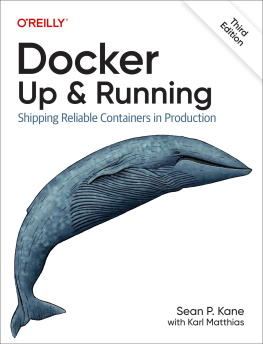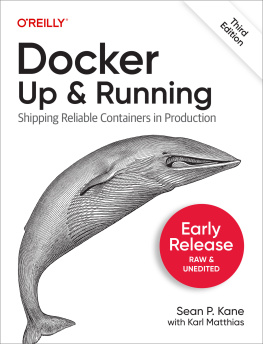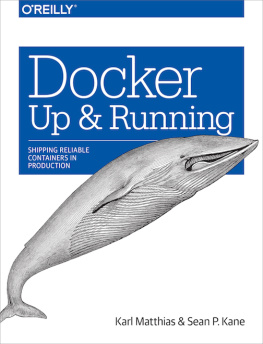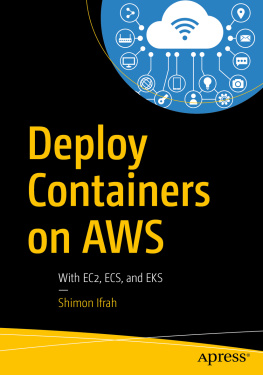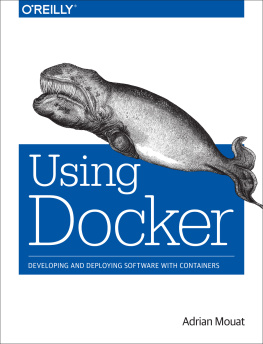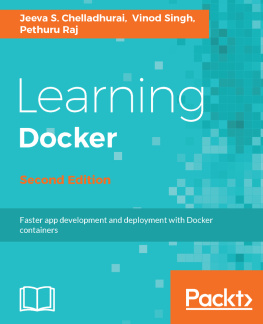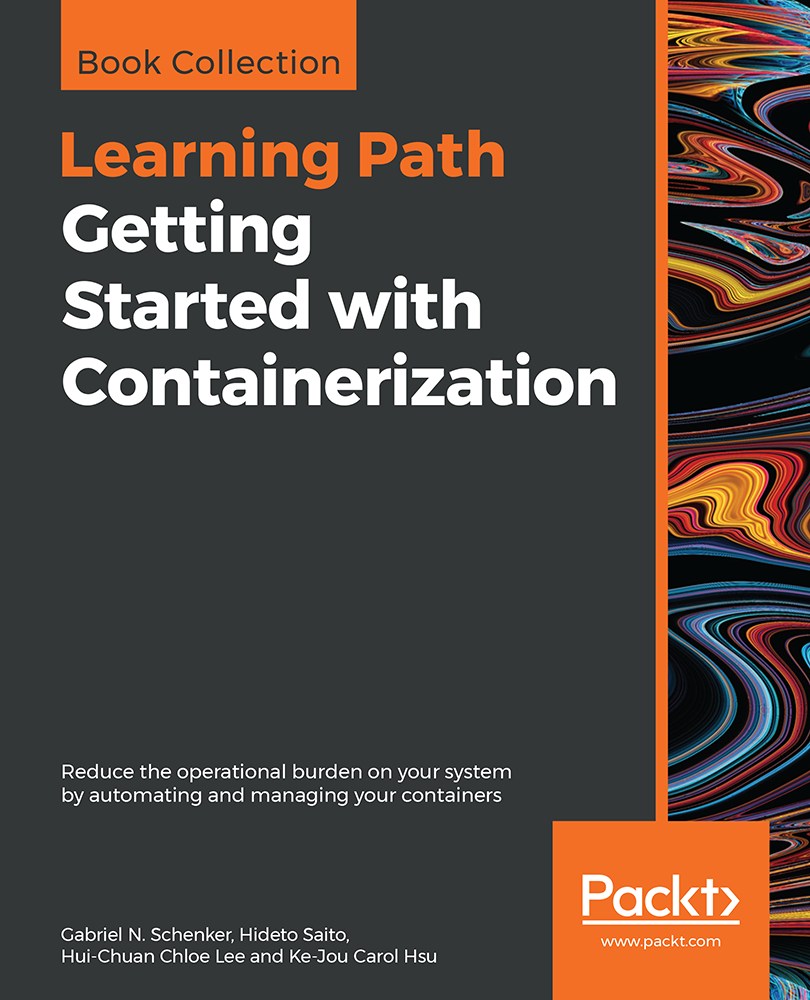
Getting Started with Containerization
Reduce the operational burden on your system by automating and managing your containers
Gabriel N. Schenker
Hideto Saito
Hui-Chuan Chloe Lee
Ke-Jou Carol Hsu

BIRMINGHAM - MUMBAI
Getting Started with Containerization
Copyright 2019 Packt Publishing
All rights reserved. No part of this book may be reproduced, stored in a retrieval system, or transmitted in any form or by any means, without the prior written permission of the publisher, except in the case of brief quotations embedded in critical articles or reviews.
Every effort has been made in the preparation of this book to ensure the accuracy of the information presented. However, the information contained in this book is sold without warranty, either express or implied. Neither the authors, nor Packt Publishing or its dealers and distributors, will be held liable for any damages caused or alleged to have been caused directly or indirectly by this book.
Packt Publishing has endeavored to provide trademark information about all of the companies and products mentioned in this book by the appropriate use of capitals. However, Packt Publishing cannot guarantee the accuracy of this information.
First published: March 2019
Production reference: 1260319
Published by Packt Publishing Ltd.
Livery Place
35 Livery Street
Birmingham
B3 2PB, UK.
ISBN 978-1-83864-570-0
www.packtpub.com
mapt.io
Mapt is an online digital library that gives you full access to over 5,000 books and videos, as well as industry leading tools to help you plan your personal development and advance your career. For more information, please visit our website.
Why subscribe?
Spend less time learning and more time coding with practical eBooks and Videos from over 4,000 industry professionals
Improve your learning with Skill Plans built especially for you
Get a free eBook or video every month
Mapt is fully searchable
Copy and paste, print, and bookmark content
Packt.com
Did you know that Packt offers eBook versions of every book published, with PDF and ePub files available? You can upgrade to the eBook version at www.packt.com and as a print book customer, you are entitled to a discount on the eBook copy. Get in touch with us at customercare@packtpub.com for more details.
At www.packt.com , you can also read a collection of free technical articles, sign up for a range of free newsletters, and receive exclusive discounts and offers on Packt books and eBooks.
Contributors
About the authors
Gabriel N. Schenker has more than 25 years of experience as an independent consultant, architect, leader, trainer, mentor, and developer. Currently, Gabriel works as Senior Curriculum Developer at Confluent after coming from a similar position at Docker. Gabriel has a Ph.D. in Physics, and he is a Docker Captain, a Certified Docker Associate, and an ASP Insider. When not working, Gabriel enjoys time with his wonderful wife Veronicah and his children.
Hideto Saito has around 20 years of experience in the computer industry. In 1998, while working for Sun Microsystems Japan, he was impressed by Solaris OS, OPENSTEP, and Sun Ultra Enterprise 10000 (also known as StarFire). He then decided to pursue UNIX and macOS operating systems.
In 2006, he relocated to southern California as a software engineer to develop products and services running on Linux and macOS X. He was especially renowned for his quick Objective-C code when he was drunk. He is also an enthusiast of Japanese anime, drama, and motorsports, and loves Japanese Otaku culture.
Hui-Chuan Chloe Lee is a DevOps and software developer. She has worked in the software industry on a wide range of projects for over five years. As a technology enthusiast, she loves trying and learning about new technologies, which makes her life happier and more fulfilling. In her free time, she enjoys reading, traveling, and spending time with the people she loves.
Ke-Jou Carol Hsu has three years of experience working as a software engineer and is currently a PhD student in the area of computer systems. Not only involved programming, she also enjoys getting multiple applications and machines perfectly working together to solve big problems. In her free time, she loves movies, music, cooking, and working out.
Packt is searching for authors like you
If you're interested in becoming an author for Packt, please visit authors.packtpub.com and apply today. We have worked with thousands of developers and tech professionals, just like you, to help them share their insight with the global tech community. You can make a general application, apply for a specific hot topic that we are recruiting an author for, or submit your own idea.
Preface
This Learning Path introduces you to the world of containerization with an overview of Docker fundamentals and a quick brush up on how Kubernetes works with containers. Starting with creating Kubernetes clusters and running applications with proper authentication and authorization, you'll learn how to create high-availability Kubernetes clusters on Amazon Web Services (AWS), and also learn how to use kubeconfig to manage different clusters. Whether it is learning about Docker containers, Docker images, and Docker Compose, or building a continuous delivery pipeline for your application, this Learning Path equips you with all the right tools and techniques to get started with containerization.
By the end of this Learning Path, you will have hands-on experience of working with Docker containers and orchestrators, such as SwarmKit and Kubernetes.
This Learning Path includes content from the following Packt products:
- Learn Docker - Fundamentals of Docker 18.x by Gabriel N. Schenker
- Kubernetes Cookbook - Second Edition by Hideto Saito, Hui-Chuan Chloe Lee, and Ke-Jou Carol Hsu
Who this book is for
This Learning Path is designed for system administrators, operations engineers, DevOps engineers, and developers who are interested in getting started with Docker and Kubernetes. Though you do not need any prior experience with Docker, it will help you to have basic knowledge of Kubernetes and containers.
What this book covers
, What Are Containers and Why Should I Use Them?, focuses on the software supply chain and the friction within it. It then presents containers as a means to reduce this friction and add enterprise-grade security on top of it. In this chapter, we also look into how containers and the ecosystem around them are assembled. We specifically point out the distinction between the upstream OSS components (Moby) that form the building blocks of the downstream products of Docker and other vendors.
, Setting up a Working Environment, discusses in detail how to set up an ideal environment for developers, DevOps engineers, and operators that can be used when working with Docker containers.
Next page

